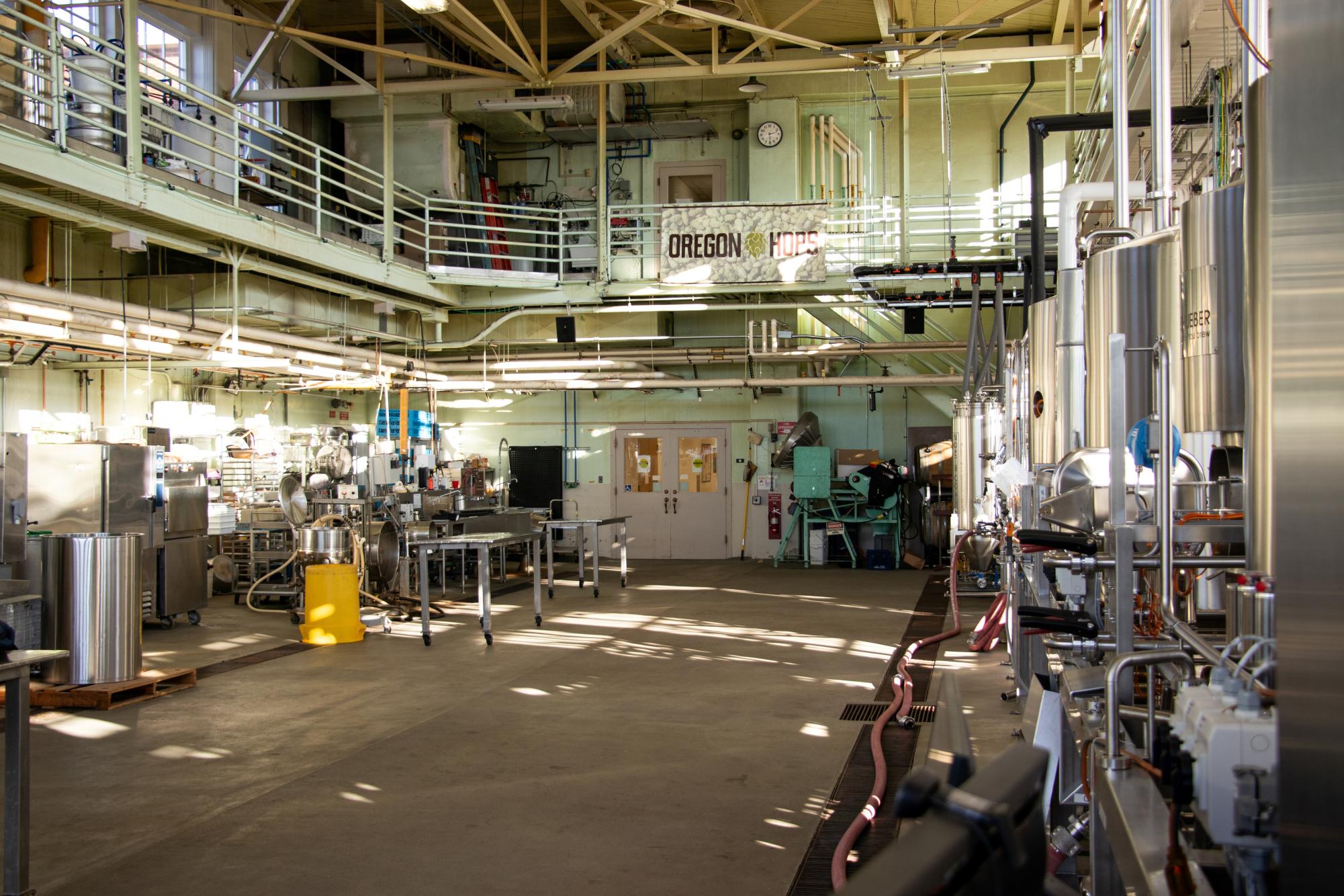In 2015, during a severe drought in Washington, John Henning, a courtesy professor in the Oregon State University Department of Crop and Soil Science, noticed something interesting happening to the hop crops he was studying.
“I saw my hop variety Vista growing phenomenally well,” said Henning, who is also an agricultural research service scientist with the United States Department of Agriculture. “When other hop varieties were barely making it halfway up.”
Vista is the name of the hop variety that has recently gained some notoriety for not only its tolerance to low-water, high-temperature conditions, but its ability to outperform other hop varieties.
“It was intended to be just your regular rolled, aroma hop that’s bred for craft brewing,” said Henning.
Vista is just one of the hundreds of different varieties of hops developed by OSU researchers, but researchers have now turned their focus to understanding what makes a hop drought-resistant.
A unique characteristic of the Vista variety is that it is triploid – it has three sets of chromosomes instead of two (like humans). Usually, this breeding technique is used to give plants more leaves or produce more fruit – not necessarily to make it more drought-tolerant.
“Vista’s growing like there’s no problem, so that’s what started me thinking down that road,” Henning said.
Henning joined forces with a postdoctoral researcher student, Renee Erickson, to study the phenomenon. Since then, Henning has been focused on understanding the genetics of drought and high temperature in hops.
They found that hops are incredibly sensitive to high temperatures and low-water conditions during flowering. This doesn’t bode very well for all the products that rely on hops because the flower– also known as the hop cone– is what is harvested from the plant.
“When it was 115 degrees here, it affected flowering in the plants greatly,”said Shaun Townsend, an associate professor and senior researcher in the Department of Crop and Soil Sciences who works closely with Henning.
Townsend’s work focuses more on field based selection and applied selection techniques– which means he’s responsible for collecting data on the plants as they grow.
By limiting water to the crops, Townsend can track how it affects their physical characteristics compared to those with normal watering conditions.
Heat tolerance is less easy to track, “That’s basically whatever Mother Nature decides to do. But when we do have those significant heat events, we can take a lot of notes in the field, in my various populations,” Townsend said.
Henning and others are still trying to pinpoint exactly what in the plant’s genetics leads to tolerance, though. He’s part of another study that began this year, doing just that.
By breeding two plants of different varieties, one that is drought-tolerant and one that is drought-resistant, they can look at the entire genetic code of offspring that are tolerant all the way down to the offspring that are not very tolerant of drought.
From this, Henning hopes to see what genes are associated with drought.
Other crops, like soybeans and corn, are already at a stage where a sample can be taken from a certain variety and analyzed to come up with a “molecular fingerprint” of sorts– a process called molecular assisted breeding.
But molecular assisted breeding requires knowing what specific genes can make a plant drought resistant, but also the aroma of the plant, its yield, how tall it grows– nearly what every gene means. Henning hopes his research will be able to move hops towards that ultimate goal.
An ultimate goal that not only prepares the plants for climate change– but ensures the beers and products that come from them still taste good.
“We would love to be able to get to a point where we can pinpoint the compounds responsible for citrus flavor or passion fruit flavor, or, you know, any of those really desirable flavors,” Henning said.
Brewing companies are large stakeholders in this research, just as large as the hop farms that grow the plants.
“I have the growers and they have a set of traits that is of interest to them,” Townsend said. “Yield, disease resistance, pest resistance, time to harvest. And then the brewing community … And the traits that they are interested in which are primarily the brewing characteristics.”
Data must be collected with both in mind, which can be a complex and heady task.
Regardless, “I’m very happy with what I get to do,” said Townsend. “And I have to drink beer as part of my job.”












































































































